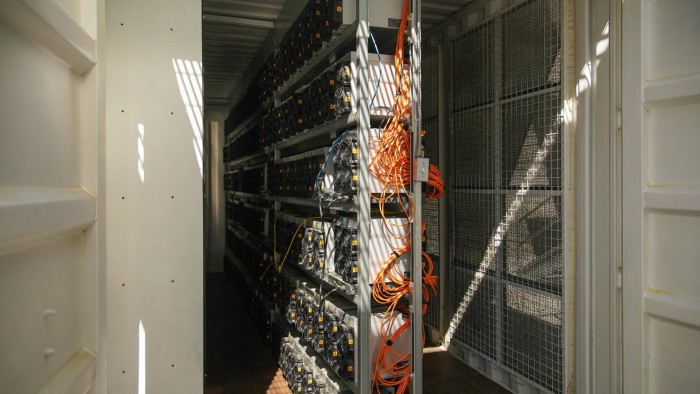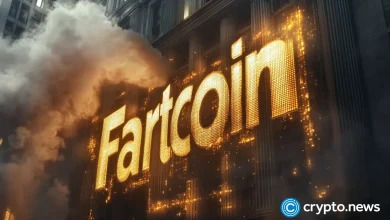Bitcoin miners are hoarding coins to overcome profit pressure

Bitcoin miners in the United States are amassing war chests of the cryptocurrency to help them sustain profit margins as competition for resources intensifies.
Companies including Mara Holdings, Riot Platforms and CleanSpark have used bitcoin’s soaring price, which hit $100,000 last month, to raise more than $3.7 billion from investors since November, which they then used to fund purchases of the coins. They often raised money through convertible bonds with a zero — or near zero — coupon.
Their moves come in the wake of Donald Trump’s election victory, as the next US president promised that Bitcoin would be “mined, minted, and manufactured in the United States of America.”
But for many, the reckless rush to buy more of the currency they mine also comes to protect themselves from further financial pressures caused by rising energy costs.
“It’s not as simple as, ‘Bitcoin price goes up and everyone’s happy,’” said Russell Kahn, chief development officer at Core Scientific. “Complex challenges remain regarding profitability and network access.”
The miners’ ambitious plans, which also include expanding artificial intelligence capability, represent a sharp reversal in expectations for the industry, which has struggled over the past eight months after the reward they receive for mining Bitcoin was halved.

Miners compete with each other to validate new Bitcoin transaction blocks, making it a crucial link to ensuring the security and reliability of the Bitcoin network.
The computer programs that run the Bitcoin network are designed to halve the reward available to miners every four years. Most recently, in April, it reduced the spoils on offer to miners from 900 to just 450 coins per day.
Investment group CoinShares estimated that the average cost of producing one bitcoin for all listed miners in the US rose to $55,950 in the third quarter, up 13 percent from the previous quarter. Including excise duty and stock-based compensation, the average cost of producing Bitcoin was $106,000. On Monday, the cryptocurrency was trading at around $102,175.
“If the price doesn’t go up, we’ll see quite a few rigs start shutting down or going bankrupt,” said James Butterville, head of research at CoinShares.
But the rise in the price of bitcoin has led to a rise in one measure of mining profitability, known as the hash price, which has risen 32 percent since Trump’s victory. This glimmer of hope has prompted many miners to return to the capital markets in search of new money.
Some, like Mara and Riot, are now taking their lead from MicroStrategy, a software group turned bitcoin buyer that led the way in issuing long-term convertible bonds to buy bitcoin. Miners also promise to make the cryptocurrency the reserve asset for their companies’ coffers, increasing their Bitcoin reserves and holding all new coins they mine.

“This Trump bump has given us more momentum to continue investing in the United States,” said Fred Thiel, CEO of Mara Holdings. Its business model now is to “accumulate as much Bitcoin as possible.” [we] He can.” She now has nearly 45,000 bitcoins, worth more than $4.4 billion.
Asher Genott, CEO of Hut 8, considers his company an “energy infrastructure” outfit with Bitcoin as the financial base of its balance sheet.
Within two months, the industry had invested about $1.8 billion of what it had raised to buy Bitcoin.
However, the pressure on miners has not eased. The collective amount of computing power needed to secure the network, known as the hash rate, has continued to rise as new entrants enter the market. It hit an all-time high on Friday. The high rate threatens to negate the benefits of Bitcoin’s rising price, putting further pressure on corporate profits.
“We are seeing a huge spike in the Bitcoin hash rate, highlighting a huge amount of new hardware coming online, making those at the higher end of the production cost more vulnerable if we see a price correction,” Butterville said.
American industry also faces fierce competition for resources at home. It has long been under pressure to justify its energy use. The US Energy Information Agency estimates that mining may already use 2.3 percent of the country’s grid, although projections vary as access to data is limited.

the Bitcoin energy consumption index It is estimated that a Bitcoin trading at around $100,000 uses the same annual energy as Poland.
Texas utility regulators in November required that all data center facilities consuming more than 75 megawatts provide annual energy data. The state is the largest in the United States for cryptocurrency mining, and authorities predict that energy demand from large users will jump by 60 percent in 2025.
Executives say the biggest challenge comes from large-scale AI developers who have greater financial resources than miners.
“Demand for AI in the US will significantly impact how much Bitcoin mining can be added to the network,” said Core Scientific’s Kahn, who predicts that the majority of Bitcoin’s computing power in the coming years will be outside the United States.
“It’s just mathematics to say: it is [the grid]What is best used as a Bitcoin mining facility, or as an AI-powered data center? “Right now, from an economic perspective, AI is going to be AI,” Kahn said.
Mara aims to move half of its mines abroad by 2028, and expand in places with surplus capacity such as Kenya, the United Arab Emirates and Paraguay.
But others are trying to find faster ways to make profits by riding the AI wave. The Nvidia GPUs used for cryptocurrency mining are also capable of handling massive amounts of AI data. Hut 8, Core Scientific, and Hive have all been centered around Renting their data center capacity To hyperscalers with artificial intelligence.
“Yes, bitcoin is up, so that really helps, but if energy prices go up tomorrow, it’s still a tough day to be a bitcoin miner,” said Zach Bradford, CEO of CleanSpark, a US-listed cryptocurrency mining company.
https://www.ft.com/__origami/service/image/v2/images/raw/https%3A%2F%2Fd1e00ek4ebabms.cloudfront.net%2Fproduction%2F3a5e0549-9d9b-4c13-aff5-5a8789a0580f.jpg?source=next-article&fit=scale-down&quality=highest&width=700&dpr=1
2025-01-07 07:00:00




